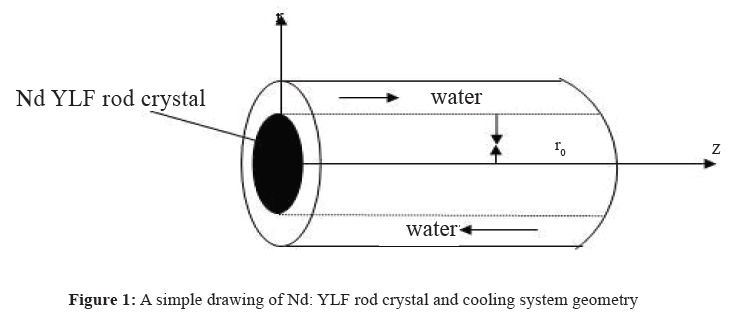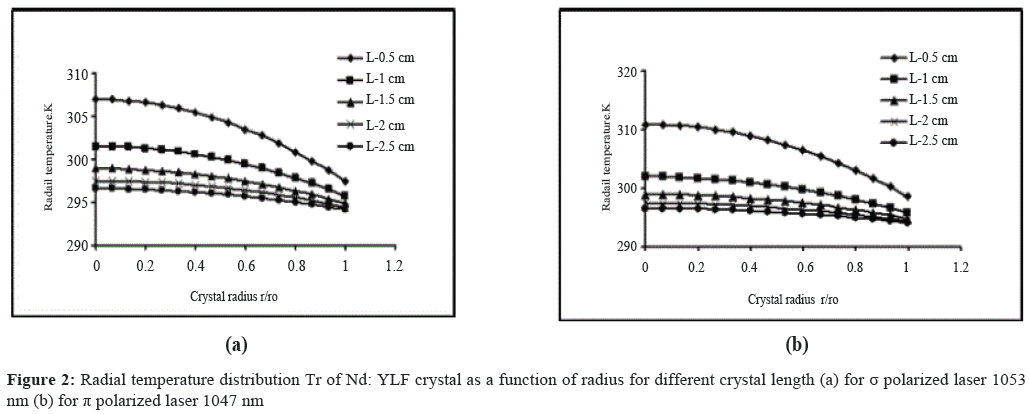Effect of Rod Crystal Dimensions on Thermal Stress in Nd: YLF Laser with 20W End-Diode Pumped

Theoretical results are reported on thermal stress effects along the π 1047 nm and σ 1053 nm polarizations in an a cut Nd: YLF rod crystal by using 20 W diode-end-pumped. The effects of rod crystal length and radius on the distribution of radial temperature and thermal stress are studied. The result from this study has shown that the temperature in a center of rod is decreased when the length of crystal increases. The center of the rod is under compression, while the surface of the rod is under tension. Furthermore, the effect of thermal stress for π polarized 1047 nm is stronger than σ polarized 1053 nm.
Thermal lens effect was discovered by Gordon et al. in 1964. When a laser crystal is absorbed pumping light energy, fluorescent light is produced. A part of pumping light will be converted into thermal energy and created a variation in refraction index and mechanical properties for laser crystal. Thermal distortion is caused when a field of a temperature gradient formed in the crystal. The thermal effects will make laser crystal as a thermal lens. This lens had most limitations the laser beam quality and resonator stability range. There are different ways to reduce thermal lens effects such as, by using composite crystal and designing the variable configuration resonator. Nd: YLF auniaxial, birefringent crystal with two main lasing line in the 1 μm wavelength region namely 1047 nm and 1053 nm both the π and σ polarized. To minimize the effects of thermal lens and stress induced birefringence, Nd: YLF crystal was used as laser material because of it good thermo optical properties. The aim of this paper is to present theoretical results for studying the effects of rod crystal dimensions on the thermal stress for π 1047 nm and σ 1053 nm polarization in a cut Nd: YLF crystal with 20 W end pumping power. The proposed geometry consists of Nd: YLF crystal rod, whose axis corresponds with the pump symmetry axis, with a radius ro which is surrounded by a cylindrical with water for cooling, which leads to conduction heat transfer from rod surface to the ambient medium. The schematic figure of the rod and cooling system geometry is shown in Figure 1.

It can be seen that radial temperature with a parabolic profile, has a maximum temperature in the center of crystal and of minimum value on the surface of crystal. Also, by increasing the crystal length, the radial temperature begins to converge in values. The thermal stress components are studied for different crystal length for and polarized using Eq. 9 as shown in Figures 2.

The numerical calculation in the present work has produced some exact results, which have classified the importance of thermo-optic effect for Nd: YLF crystal. When the crystal length is increased, the radial temperature begins convergence in values, furthermore, the temperature at the center of rod decreases. The center of rod under compression, the radial stress component vanishes at the rod surface, and the tangential and axial stress component had the same magnitude on the pumped rod surface reaching a maximum value. Also, the results are showing that thermal stress effects of π polarized is stronger than σ polarized.
With Regards,
Joseph Kent
Journal Manager
Journal of Der Chemica Sinica